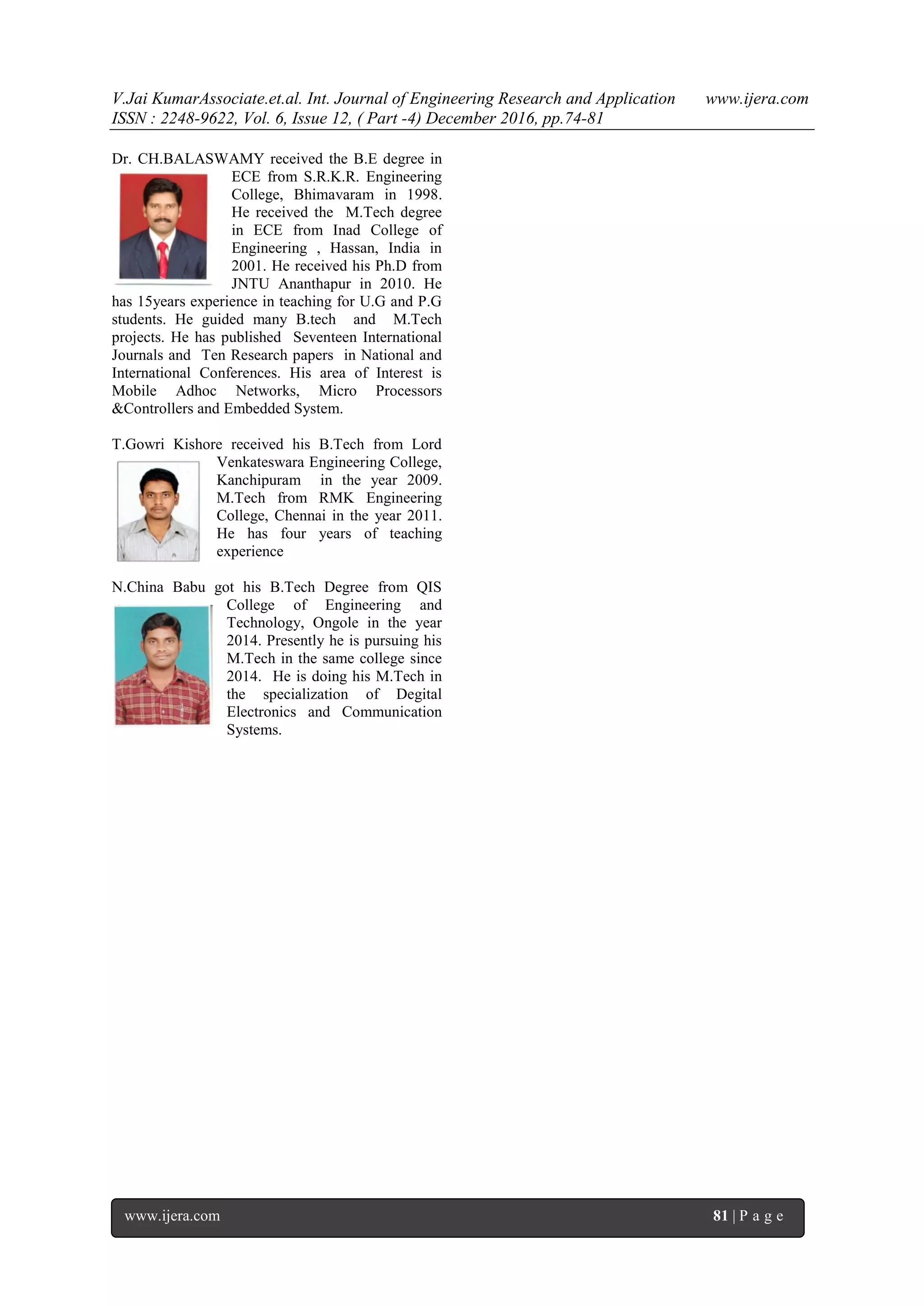The document presents a novel routing protocol designed for mobile ad-hoc networks (MANETs) which enhances network lifetime by implementing periodic route discovery. It analyzes various existing protocols like DSR (Dynamic Source Routing) and MBCR (Minimum Battery Cost Routing), highlighting the advantages and limitations of each. Additionally, the research proposes a new approach, MMBCR-PRD (Minimum Maximum Battery Cost Routing with Periodic Route Discovery), which aims to improve the efficiency of routing in energy-constrained environments.
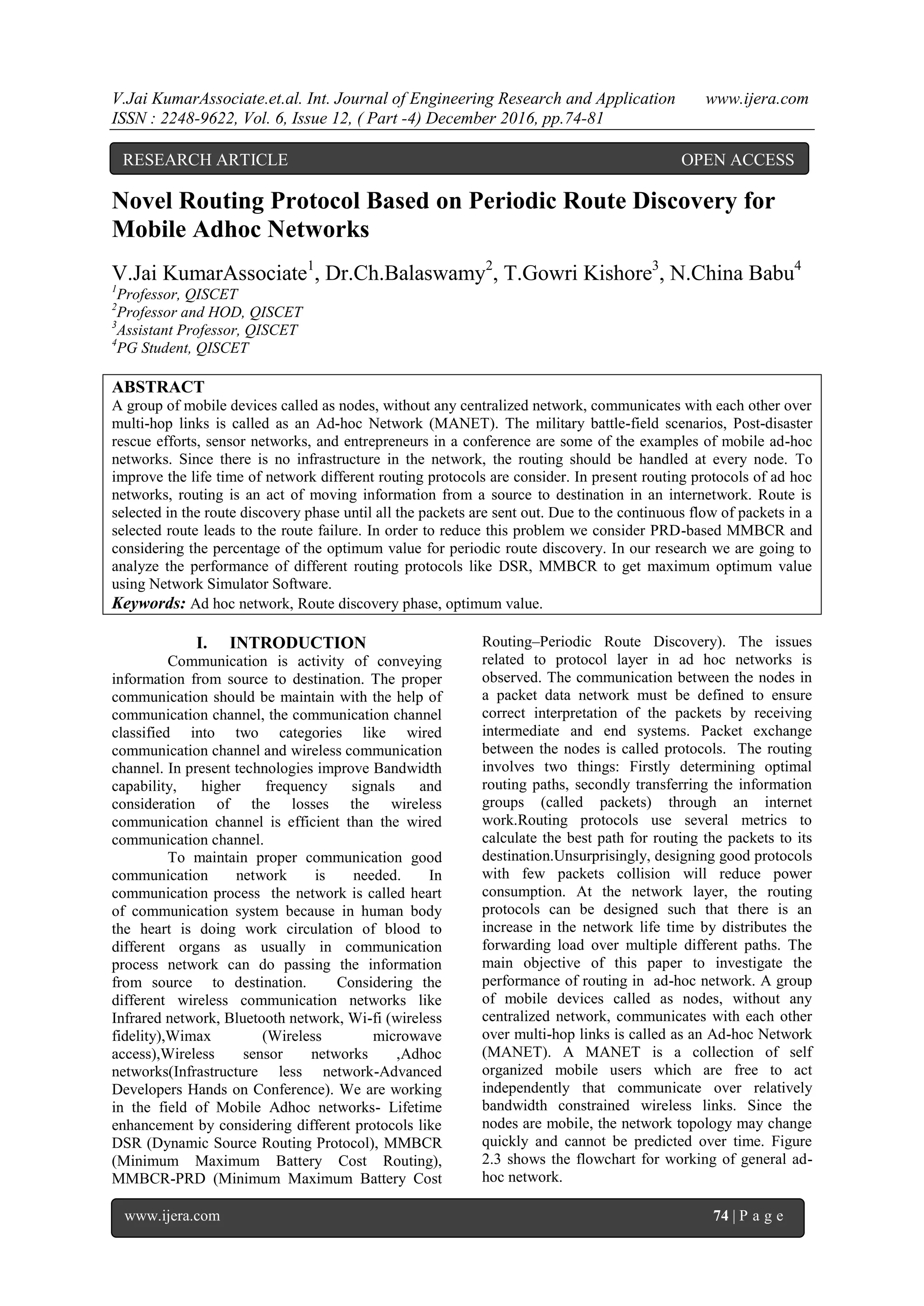
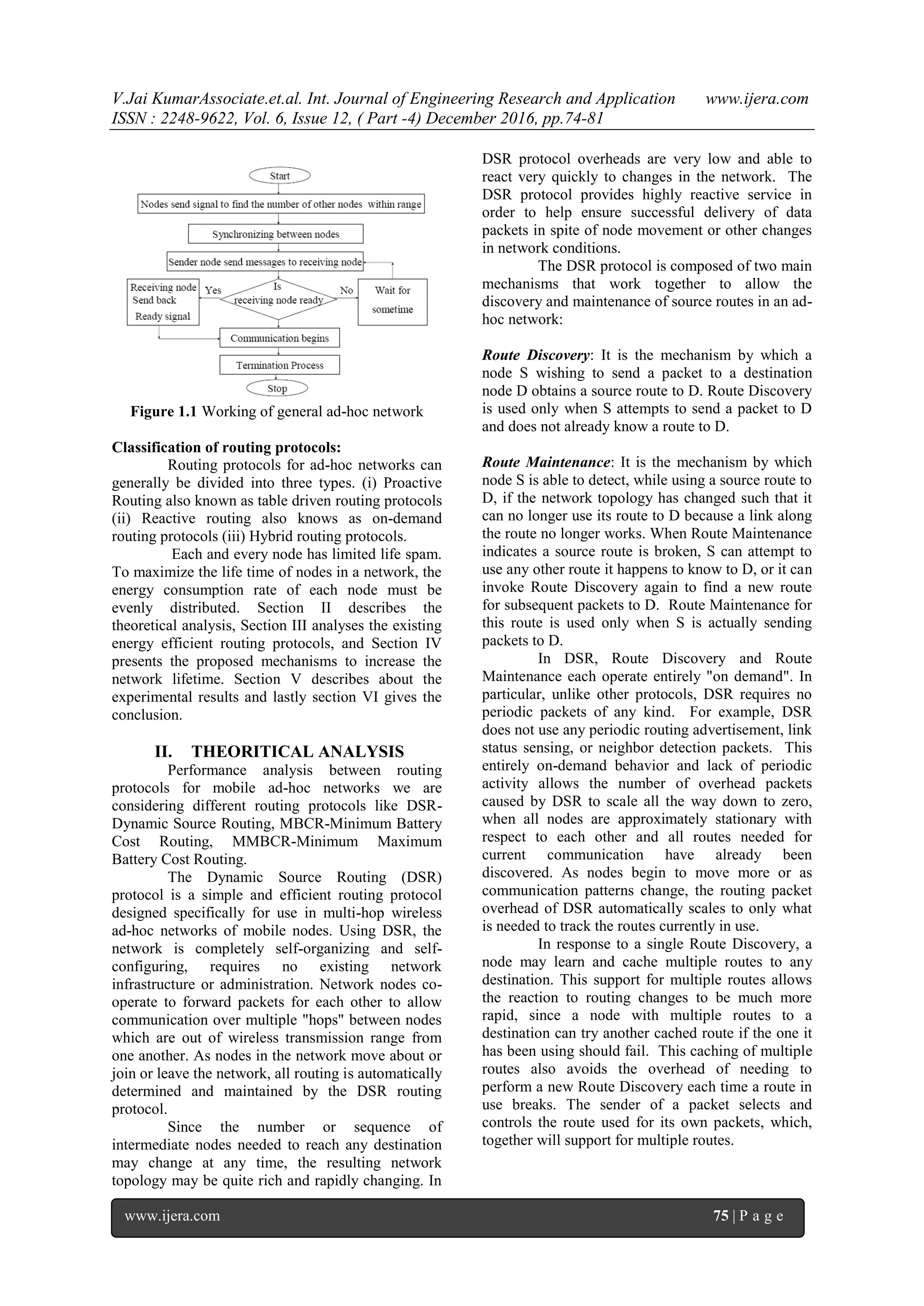
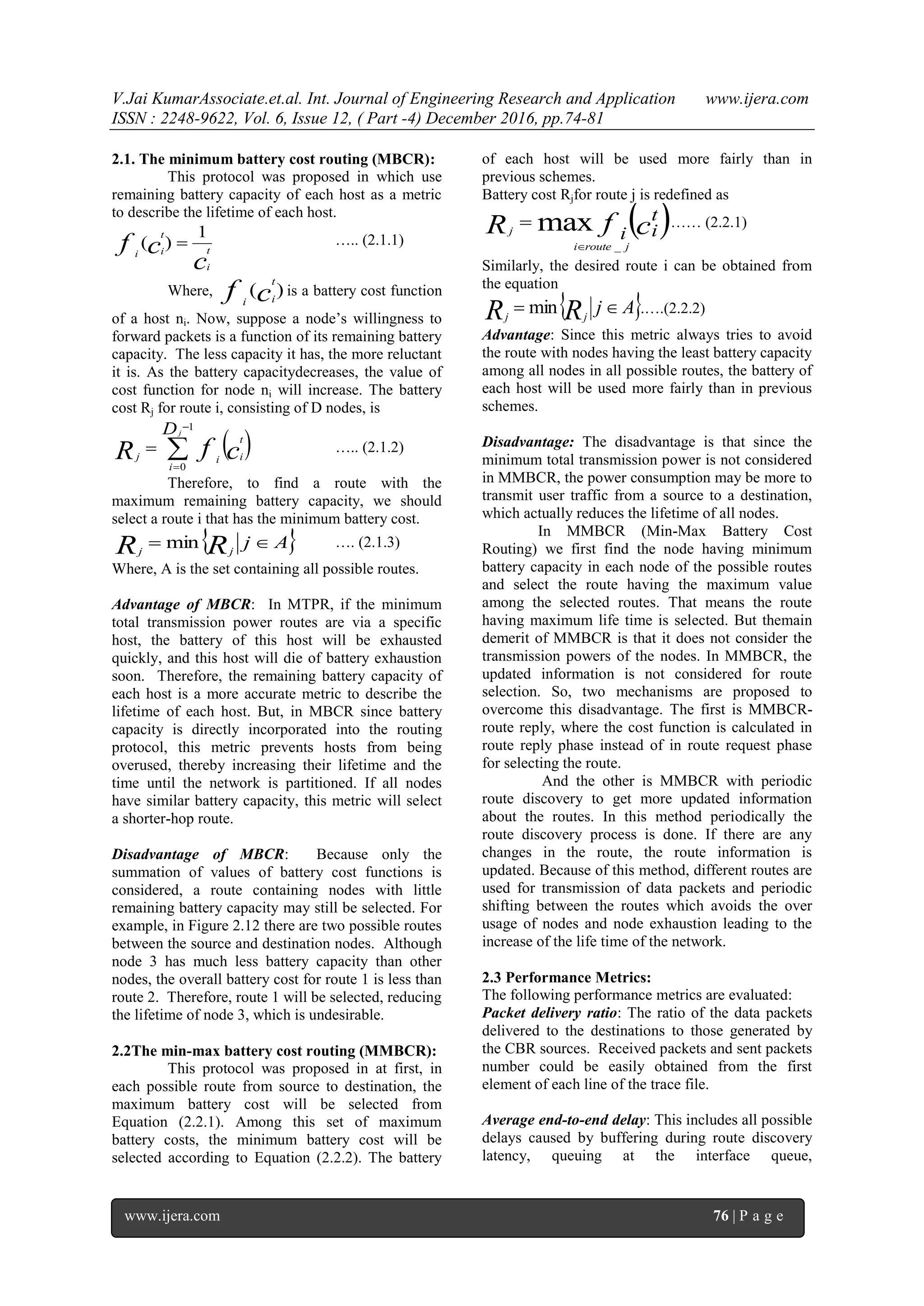
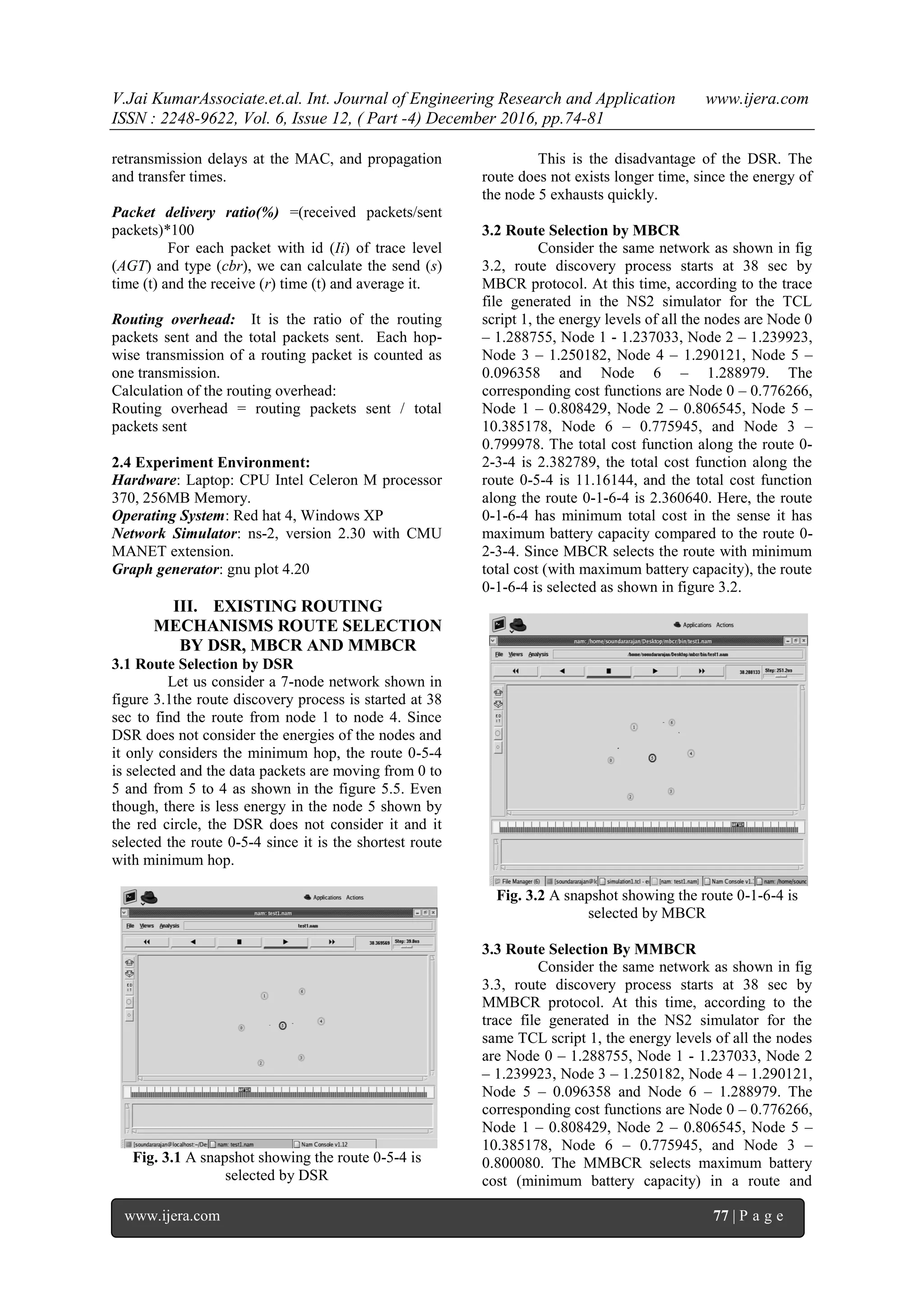
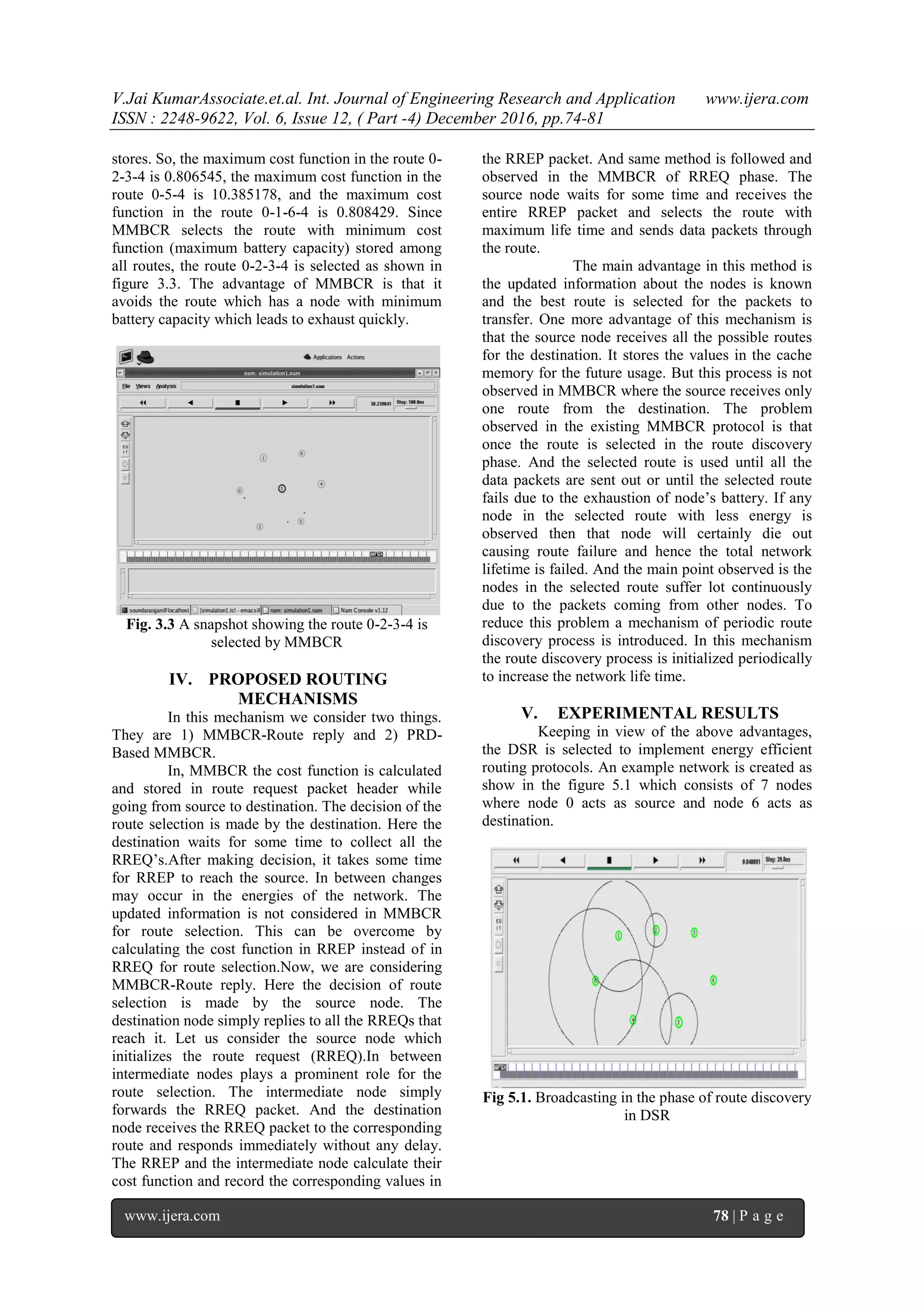
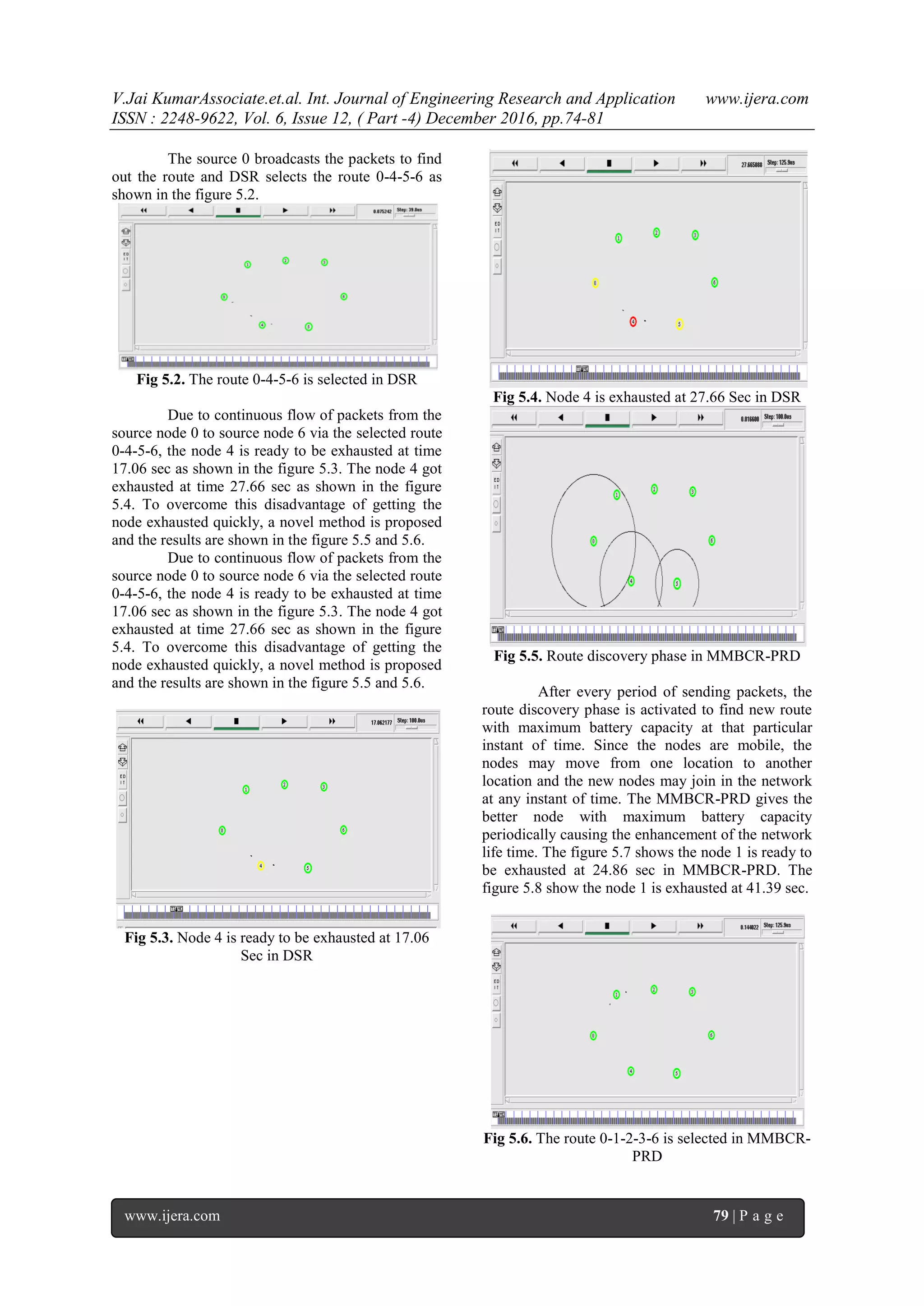
![V.Jai KumarAssociate.et.al. Int. Journal of Engineering Research and Application www.ijera.com
ISSN : 2248-9622, Vol. 6, Issue 12, ( Part -4) December 2016, pp.74-81
www.ijera.com 80 | P a g e
Fig 5.7. Node 1 is ready to be exhausted at 24.86
Sec in MMBCR-PRD
Since the proposed routing protocol PRD
based - MMBCR will activate the route discovery
process at periodic times, the burden on a single
route is avoided, and many packets will be sent by
the source node and the route failure time extends
compared to DSR. The results of the route failure
times of DSR and PRD based - MMBCR using NS2
simulator are shown in the figure 5.9.
Fig 5.8. Node 1 got exhausted at 41.39 sec in
MMBCR-PRD
Figure 5.9: Comparison of the route failure times of
DSR, and PRD based - MMBCR
From the above results, it is evident that the
PRD based MMBCR performed well compared to
the Dynamic Source Routing Protocol in the case of
life-time of the network.
VI. CONCLUSION
In this paper, two mechanisms are proposed
to increase the network life time. The first is
MMBCR-Route reply, where the cost functions are
calculated in route reply phase instead of in route
request phase and the other is MMBCR with
periodic route discovery. In this if there is any
updated information about the routes can be
modified. And different route are used for the
transmission of the data packets and periodic
shifting between the routes is observed which avoids
the over usage of nodes and node exhaustion leading
to the increase of the network life time. The
simulation results show that the proposed
mechanism PRD-based MMBCR performs better in
case of node failure time and the optimum period is
investigated for PRD based-MMBCR to get higher
node failure time.
REFERENCES
[1]. Mohammed Tarique, Kemal E. Tepe, and
Mohammad Naserian, “Energy Saving
Dynamic Source Routing for Ad Hoc
Wireless Networks”, Int. Proc. Of WIOPT,
2005.
[2]. S. Singh and C.S. Raghavendra, “PAMAS-
Power Aware Multi-Access Protocol with
signaling for Ad Hoc Networks”, ACM
Common. Rev., July 1998.
[3]. S. Singh, M. Woo, and C.S. Raghavendra, “
Power Aware routing in Mobile Ad Hoc
Networks,
[4]. “Proc. Mobicom’ 98, Dallas, TX, Oct 1998.
[5]. C.K. Toh, “Maximum Battery Life Routing
to support ubiquitous Mobile computing in
Wireless Ad Hoc Networks”, IEEE
Communications Magazine, June 2001.
[6]. W. Cho and S.L. Kim, “A fully distributed
routing algorithm for maximizing lifetime
of a wireless ad hoc network, “4th Int.
Workshop on Mobile and Wireless
Communications Network, 2002, Sep2002,
pp. 670-674.
[7]. The Network Simulator NS-2,
http://www.isi.edu/nsnam/ns/
[8]. http://www.isi.edu/nsnam/ns/tutorial
About Authors:
V. Jai Kumar received the B.Tech degree in ECE
from SSN Engineering College,
Ongole in the year 2003. He did
his M.Tech in Bapatla
Engineering College in 2008.
Pursuing Ph.D in 2012 in JNTUA,
Anantapur in the area of
Computer Networking.](https://image.slidesharecdn.com/k612047481-170103045628/75/Novel-Routing-Protocol-Based-on-Periodic-Route-Discovery-for-Mobile-Adhoc-Networks-7-2048.jpg)
